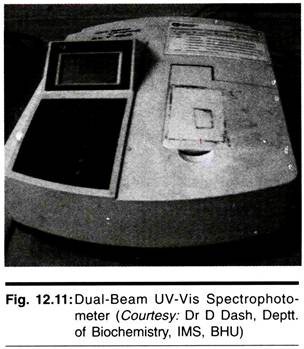ADVERTISEMENTS:
In this article we will discuss about the production of industrial oil from unusual fatty acids.
Most of the vegetable oils have marginal use in industries due to complex nature of fatty acids. The typical mixture of saturated and unsaturated C16 and C18 fatty acids that comprise major vegetable oils.
In recent years considerable effort has been directed towards genetically improving oils shows industrial properties. In particular identification and transgenic expression of genes that encode enzymes involved in the synthesis of novel fatty acids. Several non-agronomic species have been found to contain unusual or novel fatty acids as a main component of the seed oil.
ADVERTISEMENTS:
Their structures are different from those of palmitic, stearic, oleic, linoleic or linolenic acids. Many of these unusual fatty acids have properties that are well suited for industrial application. Some of the classic examples of unusual fatty acids are epoxy fatty acids in vernolic acid used commercially as plasticizers, adhesives etc.
In addition, several fatty acids and their types have been identified like petroselinic acid, recinoloic acid, eleostearic acid etc. (Fig. 17.5). Several break-through in the identification of cDNA for thioesterase, involved in the synthesis of lauric acid and fatty acid desaturase involved in the synthesis of petroselinic acid in coriander seeds with help of expressed sequence tags (EST). Therefore, it is desirable to transfer these genes in major oil crops for the synthesis of high profile rare fatty acids.
Although several examples of transgenic plants with altered oil composition, synthesis of high level of an unusual fatty acid necessary for industrial application have not yet been attempted. With the exception of lauric acid this unusual fatty acid containing industrial oil is achieved only upto 25%. One of the rare fatty acid petroselinic acid (18: ∆6) is produced in coriander seed (85%) and has a important industrial role used as a rare material.
ADVERTISEMENTS:
It is synthesised in plastid by a variation of usual terminal steps of fatty acid synthesis and desaturase. At least three specialized enzymes are involved in the synthesis of petroselenic acid in coriander seeds. These enzymes are AC thioesterase, 3-ketoacyl ACP synthase and a soluble desaturase. In addition, these enzymes interact with specialized forms of ACP and ferrodoxin.
In an transgenic approach, the entire pathway was reconstructed in Arabidopsis seeds by co-expression of the specialized desaturase, the ACP and the ferrodoxin from coriander have yielded the levels of petroselinic acid of only 1-15% of the total fatty acid. These results demonstrated the difficulty in reassembling complex fatty acid biosynthetic and metabolic pathways in transgenic seeds (Table 17.1).
Another classic example of industrial oil production is the rare fatty acid ricinoleic acid synthesised in the castor bean seed growing mainly in certain parts of India particularly in Karnataka, Andhra and Tamilnadu. A Ricinoleic acid synthesis involves hydroxylation of oleic acid by 12-hydroxylase enzyme. An attempt has been made to transfer this gene to other major oil crops in order to produce castor oil.
In addition, several poly unsaturated fatty acids like recinoleic acid and arachidonic acid have industrial value. One of the chief source for a-linolenic acid (∆: 3 ∆6,9,12) is from Borage plant in which specialized enzyme microsomal desaturase incorporate additional double bonds. This enzymatic process is derived from other plants. Therefore transformation of tobacco plants by borage derived front end desaturate gene resulted in accounting of high level of γ-linoleinic acid.
In several cases it has been observed that the accumulation of an unusual fatty acid was limited by competition between fatty acid biosynthetic catabolic pathways in the transgenic plants. As in the case of lavric acid production, the induction of catabolic enzymes may be related to the accumulation of lauric acid in the cells of transgenic seed because of the efficient incorporation of this unusual fatty acid into TAG.
Therefore, the production of transgenic crop plants that efficiently synthesised and accumulate unusual fatty acid is the next change in seed oil research.


